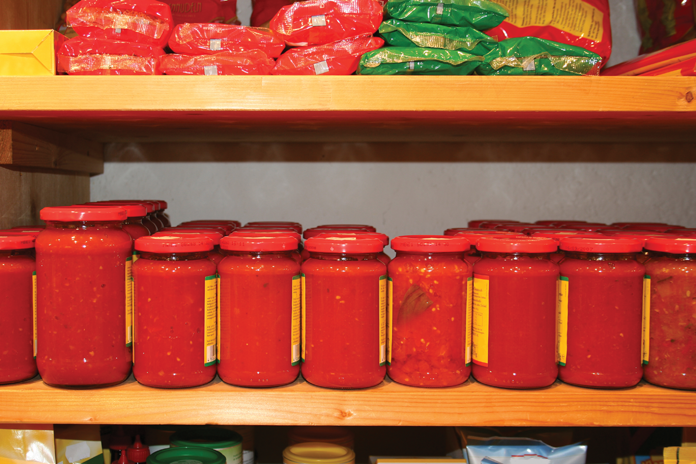
The Food Bank of Lower Fairfield County is here year-round to get donations to those who are hungry. “Poverty is a more difficult experience in a wealthy community than in a non-wealthy community,” says Kate Lombardo, the executive director of The Food Bank of Lower Fairfield County. This is an insightful observation for a hunger relief operation that serves Darien, Greenwich, New Canaan, Norwalk, Stamford and Wilton, CT, providing food to 85 agencies that operate soup kitchens, homeless shelters, child care programs, domestic violence safe houses and other community outlets. According to the food bank, the need for emergency food in Lower Fairfield County has doubled in volume in the past five years.
How It Works
The food bank collects, warehouses and distributes donated food, as well as food they purchase at bulk rate, at a very low cost for redistribution to member agencies. Last year, the food bank distributed more than two million pounds of food, which equals four million or more meals.
Fallout from the Wall Street layoffs directly affected many in Lower Fairfield County, including the working poor, as employers let go of nannies, housekeepers and landscape workers, says Lombardo. The 2008 crisis trickled into many households, while the cost of living remained high. Today, many parents working at minimum wage, for example, can’t cover basic expenses—including food. This is where the food bank is a necessity. This past summer, the food bank began operating independent of the Feeding America network and its member organization, the Connecticut Food Bank, so the need for support is great.

Philosophy
Lombardo says her organization aims to “stay local in terms of expending and distributing.” While she believes in our country “supporting other countries in times of tragedy, I think we should also look within.” This philosophy guides hiring decisions at the food bank, too. The food bank makes it a point to hire seniors, people from homeless shelters and veterans. “We’re more than just food,” she says. “It’s community taking care of community,” she says.
The Results
The 2008 recession was “a dangerous time,” says Lombardo, and hunger, “is a symptom” of other problems. Repercussions from financial crises, she adds, “push all the buttons in a society, triggering domestic violence, dysfunctional households, divorce rates.” She herself grew up in Crown Heights, and her family spent years on welfare; her father was a disabled vet. “When my mom wasn’t able, it was the neighbors.” She takes this insight straight into the field. “I’m not a metrics person,” she says. “The people we serve are not numbers. These are human beings, and they deserve dignity and a meal.”
How to Help
Give
Monetary donations are the highest priority as they allow The Food Bank of Lower Fairfield County to buy the food they already know is desired by agencies. Donors can also contribute unopened perishable or non-perishable food, from canned tuna to cereal, or conduct a food drive.
Volunteer
There are many opportunities to volunteer, as a group or an individual, to execute the food bank’s mission through its many phases, including sorting donated food, administrative work and driving and delivering food.
By the Numbers
$67,000 is the estimated annual salary a family of four needs to make to avoid being “food insecure.” At the minimum wage of $9.15 per hour, both parents would have to work 10 hours a day, 7 days a week for the entire year, just to earn $66,612.
1 out of 5 children in Connecticut is hungry or at risk of hunger.
2,610,067 is the number of pounds of food distributed to member agencies in the past year at a savings to them of more than $4 million over the wholesale cost of the food.
Contact:
The Food Bank of Lower Fairfield County, Inc.
203-358-8898
461 Glenbrook Rd., Stamford, CT
@TheFoodBankLFC
facebook.com/foodbanklfc

